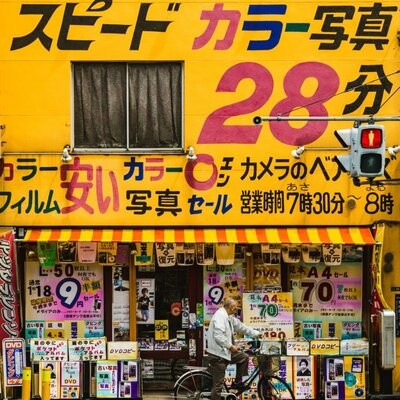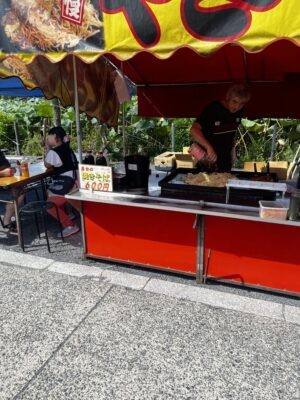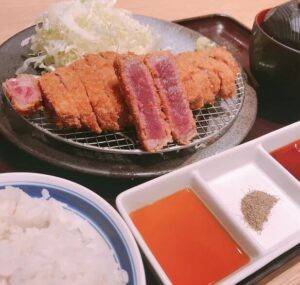How Much Cash To Bring To Japan is a crucial question for any traveler planning a trip to this fascinating country. At HOW.EDU.VN, we understand the importance of being financially prepared, blending modern convenience with traditional customs. We’ll provide you with expert insights to navigate Japan’s unique payment landscape, ensuring a smooth and enjoyable travel experience. Master your Japan budget and discover yen strategies for savvy spending.
1. Understanding Japan’s Cash Culture
Despite being a technologically advanced nation, Japan still relies heavily on cash transactions. While credit cards are becoming more widely accepted, especially in urban areas, many establishments, particularly smaller businesses, temples, shrines, and rural areas, still prefer or exclusively accept cash. This makes it essential to have an adequate amount of Japanese Yen on hand.
1.1. Why Cash Remains King
Several factors contribute to Japan’s enduring cash culture:
- Tradition: Japan has a long history of using cash, and many older generations still prefer it.
- Security: Some business owners feel cash transactions are more secure and less prone to fraud.
- Convenience: For small businesses, accepting cash can be simpler and avoid transaction fees associated with card payments.
- Cultural Preference: Many Japanese find cash easier to manage and track, promoting mindful spending.
1.2. Cash vs. Card: A Breakdown
To help you understand when you’ll need cash versus when you can use a card, here’s a general guideline:
| Situation | Payment Method | Notes |
|---|---|---|
| Hotels | Credit Card | Most major hotels accept credit cards. |
| Train Tickets | Credit Card | For Shinkansen (bullet train) and major railway lines. Local lines may vary. |
| Temple & Shrine Entrance Fees | Cash | Almost always cash only. |
| Food Stalls & Food Trucks | Cash | Nearly always cash only. |
| Department Stores | Credit Card | Generally accept credit cards. |
| Larger Restaurants | Credit Card | Most well-known restaurants in urban areas accept cards. |
| Smaller “Mom & Pop” Shops | Cash | More likely to require cash, especially in rural areas. |
| Convenience Stores | Mixed (Cash & Card) | Depends on the store and your card. Some may only accept Japanese credit cards or specific contactless payments. |
| Taxis | Mixed (Cash & Card) | In major cities, cards are often accepted, but in rural areas, cash is more reliable. |
| Vending Machines | Cash | The vast majority are cash only. |



2. Estimating Your Cash Needs
Determining how much cash to bring depends on several factors, including your travel style, destination, and planned activities.
2.1. Key Factors to Consider
- Trip Duration: The longer your trip, the more cash you’ll likely need.
- Destination: Major cities like Tokyo and Osaka offer more opportunities to use credit cards, while rural areas rely more on cash.
- Accommodation: If you’ve prepaid for your accommodation, you’ll need less cash.
- Transportation: If you plan to use a Japan Rail Pass, you’ll need less cash for long-distance travel, but local transportation might require cash.
- Activities: Visiting temples, shrines, local festivals, and street food stalls will require cash.
- Dining: Eating at smaller, local restaurants or food stalls usually means paying in cash.
- Shopping: While major retailers accept cards, smaller shops and markets often require cash.
2.2. Sample Budgets
To give you a general idea, here are some sample daily budgets based on different travel styles:
Budget Traveler:
- Accommodation: $30 (hostel or budget hotel)
- Food: $20 (convenience store meals, ramen)
- Transportation: $10 (local trains, buses)
- Activities: $10 (temple entrance fees, free attractions)
- Total Daily Cash Need: $70 (approximately 10,500 Yen)
Mid-Range Traveler:
- Accommodation: $80 (business hotel or Airbnb)
- Food: $40 (mix of restaurants and convenience stores)
- Transportation: $20 (local trains, subways)
- Activities: $20 (museums, attractions)
- Total Daily Cash Need: $160 (approximately 24,000 Yen)
Luxury Traveler:
- Accommodation: $200+ (high-end hotels)
- Food: $100+ (fine dining restaurants)
- Transportation: $50+ (taxis, private transportation)
- Activities: $50+ (exclusive tours, experiences)
- Total Daily Cash Need: $400+ (approximately 60,000 Yen)
These are just estimates, and your actual spending may vary.
2.3. Emergency Funds
It’s also wise to factor in an emergency fund. Unexpected events like medical emergencies, lost items, or transportation disruptions can occur. Having extra cash can provide peace of mind and help you handle unforeseen circumstances.
- Recommended Emergency Fund: $300 – $500 (approximately 45,000 – 75,000 Yen)
3. Practical Tips for Managing Cash in Japan
3.1. Exchanging Currency
- Before You Go: Exchanging a small amount of currency before your trip can be helpful for immediate expenses upon arrival, such as transportation from the airport.
- In Japan:
- Banks: Major banks like MUFG and SMBC offer currency exchange services.
- Post Offices: Japan Post Bank also provides currency exchange services.
- Currency Exchange Kiosks: These are available at major airports and some tourist areas.
- Avoid: Exchanging currency at hotels or tourist traps, as they often have unfavorable exchange rates.
3.2. Using ATMs
- 7-Eleven ATMs: These are widely available and generally accept foreign cards. Look for the “International ATM” sign.
- Japan Post Bank ATMs: These ATMs also accept foreign cards.
- Citibank ATMs: While less common, Citibank ATMs can be found in major cities.
- Fees: Be aware of potential ATM fees charged by both your bank and the ATM provider.
3.3. Carrying Cash Safely
- Divide Your Cash: Don’t keep all your cash in one place. Split it up and store it in different pockets, bags, or a money belt.
- Be Discreet: Avoid displaying large amounts of cash in public.
- Use a Secure Wallet: Choose a wallet that is difficult to pickpocket.
- Stay Aware: Be mindful of your surroundings, especially in crowded areas.
3.4. Alternative Payment Methods
-
Suica/Pasmo Cards: These rechargeable cards can be used for transportation on most trains and buses in major cities, as well as at many vending machines and convenience stores. You can load cash onto these cards at train stations and convenience stores.
-
Contactless Payments: While not as widespread as in some countries, contactless payments like Apple Pay and Google Pay are becoming more accepted, especially at major retailers.
-
Credit Cards: Use credit cards whenever possible to minimize the amount of cash you need to carry. Be sure to inform your bank of your travel dates to avoid having your card blocked.
4. Scenarios Where Cash is Essential
To further illustrate the importance of cash, here are some specific scenarios where you’ll likely need it:
4.1. Temples and Shrines
Many temples and shrines, especially smaller ones, only accept cash for entrance fees, offerings, and purchasing souvenirs.
4.2. Local Festivals (Matsuri)
Attending a local festival is a must-do experience in Japan. However, most food stalls and game booths at these festivals operate on a cash-only basis.
4.3. Street Food and Small Eateries
Japan is famous for its delicious street food and small, family-run restaurants. These establishments often prefer or exclusively accept cash.
4.4. Transportation in Rural Areas
While major train lines accept credit cards, local buses and taxis in rural areas may only accept cash.
4.5. Vending Machines
Japan has a vending machine for almost everything, from drinks and snacks to ramen and even clothing. However, the vast majority of these vending machines only accept cash.
5. How Much Cash Do Locals Carry?
Understanding how much cash locals carry can provide additional insight. While it varies depending on lifestyle and habits, many Japanese people carry a significant amount of cash.
5.1. Cultural Norms
It’s not uncommon for Japanese people to carry between 10,000 to 30,000 Yen (approximately $70 – $200) for daily expenses. Some may even carry more, especially if they plan to visit cash-only establishments or attend local events.
5.2. Paying Bills in Cash
Some Japanese people still prefer to pay bills, such as rent or utilities, in cash at convenience stores or banks. This can influence the amount of cash they carry.
5.3. Security Concerns
Despite Japan being a safe country, some people prefer to carry cash as a backup in case of emergencies or card payment failures.
6. Expert Advice from HOW.EDU.VN
At HOW.EDU.VN, we pride ourselves on connecting you with leading experts. To provide you with the most comprehensive advice on managing cash in Japan, we consulted with Dr. Hana Tanaka, a renowned economist specializing in Japanese consumer behavior.
6.1. Dr. Tanaka’s Insights
“While Japan is gradually moving towards a cashless society, cash remains an integral part of daily life, especially for tourists. It’s crucial to strike a balance between carrying enough cash for smaller transactions and utilizing credit cards for larger expenses. Planning your budget, knowing where you’re likely to need cash, and understanding the local customs will significantly enhance your travel experience.”
6.2. Budgeting Strategies
Dr. Tanaka recommends creating a detailed budget that accounts for all potential expenses. “Break down your daily costs into categories such as accommodation, food, transportation, and activities. Research which establishments accept credit cards and plan accordingly. Always have a buffer for unexpected costs.”
6.3. Navigating the Cashless Transition
“Keep an eye on the increasing acceptance of contactless payments. Major retailers and transportation hubs are becoming more equipped for these transactions. However, don’t rely solely on digital payments, especially when venturing into rural areas or visiting local markets.”
7. Safety and Security
Japan is known for its low crime rate, making it a relatively safe country for carrying cash. However, it’s always important to take precautions to protect yourself from theft or loss.
7.1. Practical Safety Tips
- Use a Money Belt: A money belt is a discreet way to carry a significant amount of cash.
- Keep Cash in Multiple Locations: Divide your cash and store it in different pockets or bags to minimize potential loss.
- Be Aware of Your Surroundings: Pay attention to your surroundings, especially in crowded areas.
- Avoid Displaying Large Amounts of Cash: Be discreet when handling cash in public.
- Use Secure ATMs: Withdraw cash from ATMs located in well-lit and secure areas.
7.2. Insurance Considerations
Consider purchasing travel insurance that covers cash loss or theft. Review the policy details to understand the coverage limits and any exclusions.
8. Frequently Asked Questions (FAQs)
1. How much cash should I bring to Japan for a 10-day trip?
- This depends on your travel style. A budget traveler might need $700 (105,000 Yen), while a mid-range traveler could need $1600 (240,000 Yen), and a luxury traveler might need $4000+ (600,000+ Yen).
2. Can I use my debit card in Japan?
- Yes, you can use your debit card at ATMs that accept international cards, such as 7-Eleven and Japan Post Bank ATMs.
3. Is it better to exchange currency before I go to Japan?
- Exchanging a small amount of currency before your trip can be helpful for immediate expenses. However, you can also exchange currency at banks, post offices, and currency exchange kiosks in Japan.
4. What should I do with leftover Japanese Yen coins?
- You can use them to purchase souvenirs at the airport, donate them to charity, or exchange them back to your home currency at a currency exchange service.
5. Are credit cards widely accepted in Japan?
- Credit cards are becoming more widely accepted, especially in major cities. However, many smaller businesses and rural areas still prefer cash.
6. Can I use Apple Pay in Japan?
- Apple Pay is accepted at some major retailers and transportation hubs, but not as widely as in some other countries.
7. Is it safe to carry cash in Japan?
- Japan is a safe country, but it’s always important to take precautions to protect yourself from theft or loss.
8. What is a Suica or Pasmo card?
- These are rechargeable cards that can be used for transportation and at many vending machines and convenience stores.
9. Should I inform my bank before traveling to Japan?
- Yes, it’s always a good idea to inform your bank of your travel dates to avoid having your card blocked.
10. What should I do if I run out of cash in Japan?
- You can withdraw cash from an ATM using your debit or credit card. You can also transfer money online and withdraw it from a bank or post office.
9. Real-Life Scenarios
To illustrate the importance of being prepared with cash, here are a couple of real-life scenarios:
9.1. The Temple Visit
Sarah, a tourist from the United States, visited a beautiful, secluded temple in Kyoto. She was captivated by its serene atmosphere and intricate architecture. However, when she went to purchase a small souvenir, she realized that the temple only accepted cash. Fortunately, she had followed our advice and brought enough cash for such situations.
9.2. The Food Stall Adventure
David, a food enthusiast from the UK, was exploring the vibrant street food scene in Osaka. He stumbled upon a mouth-watering Takoyaki (octopus ball) stall, but to his dismay, they didn’t accept credit cards. Thanks to his foresight, he had sufficient cash to savor the local delicacy.
10. The Future of Payments in Japan
While cash is still prevalent, Japan is gradually moving towards a more cashless society. The government is actively promoting digital payments to boost economic growth and improve convenience for both locals and tourists.
10.1. Government Initiatives
The Japanese government has launched several initiatives to encourage the adoption of digital payments, including tax incentives for businesses that accept cashless transactions and public awareness campaigns to promote the benefits of cashless payments.
10.2. Technological Advancements
The increasing popularity of smartphones and mobile payment apps is also driving the cashless trend. More and more businesses are adopting contactless payment terminals and QR code payment systems.
10.3. Long-Term Outlook
While it may take several years for Japan to fully embrace a cashless society, the trend is undeniable. As technology advances and consumer preferences evolve, digital payments will likely become more prevalent in the years to come.
Conclusion
Navigating Japan’s unique payment landscape requires a blend of preparedness and adaptability. While credit cards are gaining traction, cash remains an essential tool for travelers. By understanding the cultural nuances, estimating your cash needs, and following our expert tips, you can ensure a smooth and enjoyable journey through this captivating country.
Remember, planning ahead is key. Calculate your estimated daily expenses based on your travel style and destinations. Bring enough cash to cover situations where cards aren’t accepted, and always have a backup plan.
At HOW.EDU.VN, we’re committed to providing you with the most reliable and up-to-date information to enhance your travel experiences. If you have any further questions or need personalized advice, don’t hesitate to reach out to our team of experts.
Ready to plan your trip to Japan with confidence? Contact HOW.EDU.VN today and connect with our team of expert PhDs for personalized travel advice and insights. We can help you create a customized budget, navigate the payment landscape, and ensure a seamless and unforgettable experience.
Contact us today:
- Address: 456 Expertise Plaza, Consult City, CA 90210, United States
- WhatsApp: +1 (310) 555-1212
- Website: HOW.EDU.VN
Let how.edu.vn be your trusted companion in exploring the world. We provide you with the knowledge and support you need to make informed decisions and embark on extraordinary adventures. From budgeting tips to cultural insights, our team of PhD experts is here to guide you every step of the way.